12 Pros And Cons Of Print-On-Demand As A Business Model
Are you thinking about running your own print-on-demand business?
The print-on-demand industry is continuing to grow according to ComCap’s analysis. It’s one of the reasons why some people feel so strongly about this industry’s future.
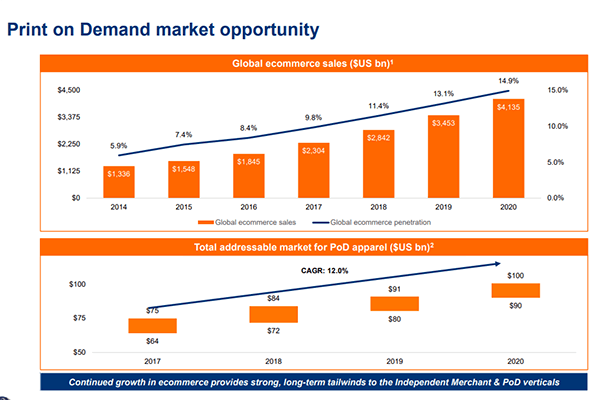
But, before you start an online business, it’s critical to check out the pros and cons of subcontracting the printing of your own custom designs.
In this post, we’ll explore what print-on-demand is, and all of the advantages & disadvantages you need to know.
What is print-on-demand?
What is print-on-demand (POD) and why do people use print-on-demand services when starting their business?
To better understand what print-on-demand is, we need to start with the dropshipping business model.
What is dropshipping?
Dropshipping is an online business model where sellers use third-party suppliers to source products and fulfill orders. That means the seller only has to take care of the front end of operations — mainly finding new customers, processing the orders, and answering support messages.
This is why it’s one of the few business models where the seller never touches the product.
It’s the supplier who handles the backend operations — from sourcing the products to storing, packaging, and shipping them.
Basically, a customer places an order with the seller. The seller passes it on to the supplier. And then the supplier ships the order to the customer.
What’s in it for everyone? Well, the supplier doesn’t have to deal with marketing while the seller doesn’t have to deal with product inventory. It’s a win-win situation for both parties — for the most part (more on that later).
What is print-on-demand? And how does it work?
With the traditional dropshipping model, sellers promote products that are pre-built and ready to ship. A print-on-demand business works the same way with some small differences.
POD companies—AKA the suppliers—will still handle all the sourcing and shipping of products.
Only this time, sellers will provide designs that the suppliers will then have to print on t-shirts, mugs, hoodies, caps, and other products before shipping them to customers.
In short, POD companies work as printing partners on top of being dropshipping services. This means that instead of selling generic products, you can sell custom branded products.
Who should use POD services?
The print-on-demand business model is great for individuals who want to start an online business but don’t have the means to go all-in just yet.
As you’ll find out in a bit, there are plenty of advantages to using print-on-demand services. But one of the biggest is that it’s an easy business to get into. In most cases, you don’t even need a starting capital since POD platforms are the ones that handle the inventory. Your only role is to supply both the artwork and the orders.
It’s a great way to make money on the side too. All you have to do is upload your artwork to an ecommerce platform and wait for orders to come in. Some sellers go to work in the morning and process orders when they get home.
Sounds great, right?
Before you start an online business and find a third-party supplier, you should look at this list of pros and cons of print-on-demand services.
The advantages of print-on-demand
What are the pros and cons of a print-on-demand business? Before you look at all the downsides of the POD business model, you should first see why so many entrepreneurs prefer using a drop shipping service over classic business models.
While this pros and cons list mainly applies to print-on-demand, some of them apply to dropshipping in general.
You can start your own brand without risks
A POD business is set up in such a way that anyone can start a brand and sell t-shirts, tote bags, posters, canvas prints, and anything else they want without the need for capital.
You can find a POD company that will let you set up an online store for free. All you need to do is upload all your designs there and wait for orders to start rolling in.
For reference, the apparel segment has the biggest revenue share (as of 2021) in the global print-on-demand market.
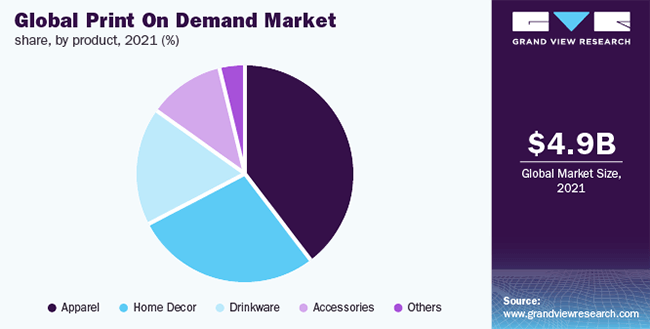
And if your business does not work out, no problem. You can close down your ecommerce store and maybe try again some other time. That’s not something you could do if you’ve already invested a lot of cash in the business.
You can save money on equipment and labor
You’ll need a lot of specialized equipment if you’re going to print your own products. And you’ll need to hire people who know how to use the equipment.
According to Starter Story, building your own digital printing business can cost anywhere between $62 all the way to $19,267. The cost of renting space for your printing shop alone will already set you back thousands of dollars.

These are costs that a startup business might not be able to afford.
That’s the reason why some businesses partner with print-on-demand companies. Since they already have the equipment and expertise, you can focus on designing products.
As a bonus, working with print-on-demand companies means you won’t have to worry about product shipping either. They’ll take care of all the headaches commonly associated with it.
You can experiment with different design ideas
The nice thing about using a print-on-demand dropshipping model is that you’re free to experiment with as many designs as you want.
Why is that?
Remember: A POD partner will only print products after you close a sale. Unlike a traditional model, you’ll have to print and stock up on products just in case someone buys one of them.
If one of your designs does not end up selling through, just take it down. You can upload as many designs as you want anyway — though it would be ideal to only start with a handful at first.
This allows you to iterate your designs and get a clear understanding of which products will sell, without buying any inventory.
You can sell different products
Not only can you sell different designs, but you can also sell different products as well if you use a print-on-demand service.
But there’s a limit to what products you can sell. You can only go with what your POD partner is offering. So when you look for a third-party service provider, make sure it offers all the products you want to sell.
Though the t-shirt printing market remains as hot as ever, you may want to expand your product selection. A store owner can sell custom-printed mouse pads, rugs, face masks, and more at a good retail price.
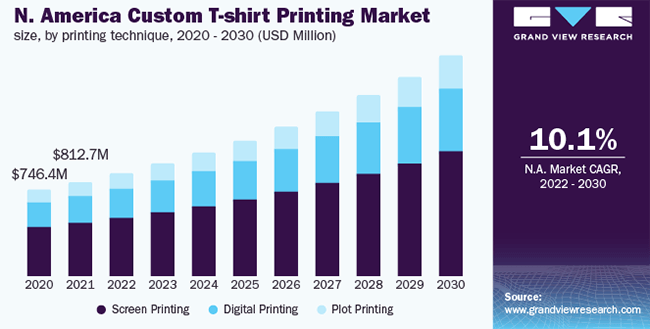
You can forget about product storage
Storing product inventory is one of those factors that prevent people from starting an online business. If you’re just starting, there’s a good chance that you’re launching your business from home. That’s not the ideal place to set up a printing facility and store your goods.
A print-on-demand partner has all the space for a printing facility. They’ll keep all the raw materials and the equipment to run your business.
Just tell them what to print and they’ll ship it to your customer as soon as it’s ready. So convenient, right?
You can focus on designing artwork and acquiring customers
Because the print-on-demand company handles all the printing and shipping, you can stay focused on creating new designs and finding new customers to sell them to.
If you’re using print-on-demand sites as your ecommerce platform (like Amazon and RedBubble), then it will continue to promote your products to new customers. You won’t even have to confirm the order. They’ll print it as soon as the customer pays for the item.
You only need to upload your design and market the page to as many people as you can.
The disadvantages of print-on-demand
As good as the print-on-demand business model sounds, it has its drawbacks. Here are a few cons of print-on-demand art business.
You have no control over product quality
If you use subpar materials, you won’t meet your customers’ expectations. If you are sourcing your own materials then you can make sure your designs are printed on great materials. But that’s not the case when you use a print-on-demand service.
What can you do?
print-on-demand companies will typically use the same type of material for all incoming orders. So if you and some other seller are both selling shirts using the same POD supplier, your designs will likely be printed on the same raw material.
Before you upload your designs, try ordering from the supplier to check if they print on high-quality raw material.
You have no control over the order fulfillment process
While some businesses would love nothing more than to walk away from the order fulfillment process, this is something that might not sit well with you.
You won’t see products being prepped for printing. You won’t see how people handle the products after. You can’t check the quality of the products before they’re shipped.
It would feel like you’re not in control of anything — which is partly true.
You Have to rely on a third-party service
What if you wanted to print your design on products that your POD partner doesn’t offer? What do you do?
The sad truth is that you can’t really do anything about it. And you can’t do anything about the materials used either. For example, you might want to have your design printed on a shirt material other than cotton. If your supplier doesn’t have any other fabric to choose from, you’re out of luck.
And even if they were to find less expensive raw materials down the road and lower their printing costs, they won’t necessarily pass on those savings to you. That’s not the case if you’re printing your own products since any money you save will go directly to you.
You have to wait longer before products get shipped to customers
Studies show that 69% of customers won’t shop with a retailer if the item they ordered is not delivered within two days of the promised arrival date.
Using a print-on-demand service means designs are only printed as orders get finalized. That means shipping gets delayed by a bit, especially if there are other sellers in the queue.
If you print products ahead of time, you can have them boxed and shipped in less than an hour if you really push it.
And your supplier might even run into issues that could delay shipping further. For example, the supplier could run out of materials it will need to print. This could make fans of your brand angry — and there’s nothing you can do about it since the problem is with the supplier.
You have lower profit margins
You’re not the only one that needs to make a profit off of every sale. The print-on-demand service will have to make money too. And their part of the profit is non-negotiable. You have to go with their profit margin.
You’ll have to take shipping costs into account too. According to a report by Hubspot (link no longer live), 25% of customers said they abandoned their carts when they found out about high shipping costs.
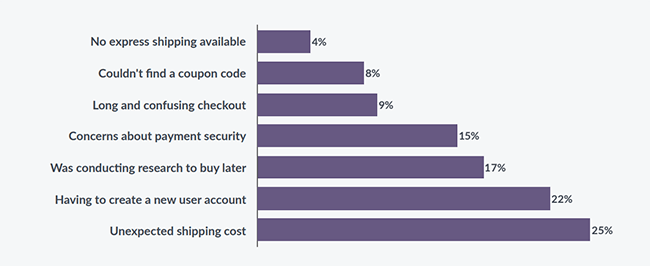
That means if you want to lower your costs to be competitive with other brands in your space, you’ll have to settle for lower profit margins.
You have to deal with unsatisfied customers
There’s no escaping it. Just like any other business, you’ll eventually run into unsatisfied customers – no matter how good your product is. And if you’re working alone, then you’ll have to be your own customer service department. 57% of customers said that great customer service made them loyal to a brand.
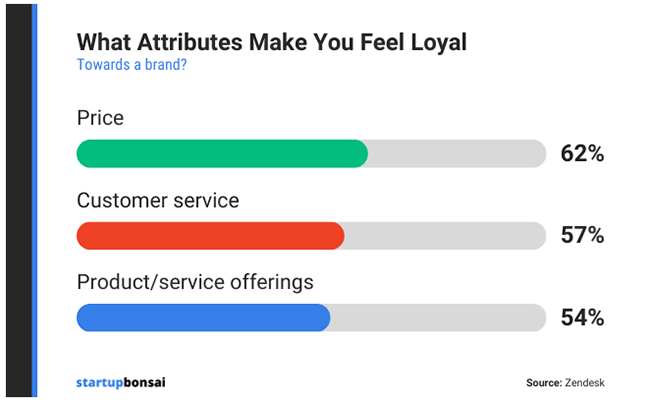
Which is what makes running a dropshipping business that much harder.
Remember: You’re working with a third-party company. So when customers complain about defective products, you’ll have to coordinate with the POD company to see what happened and how it can be fixed.
You’ll have to make sure that you have a return policy in place that coincides with the POD company’s own policy.
Customer refund & return options are limited
With most POD services, your customers will have limited refund options. The exact refund policy will depend on the service you use, but it will generally only be able to provide a refund if a product is damaged or the wrong product is dispatched.
So, if a customer wants to return an item that they ordered in the wrong size, or they get buyer’s remorse – refunding them won’t be an option unless you want to cover the printing & fulfillment costs.
If you go ahead with using the POD business model, Printful has some useful resources on creating a refund policy for your store.
Final thoughts
Like any business model, print-on-demand has a number of pros and cons you should be aware of.
Do the positives outweigh the negatives? And is it a good fit for your business? That’s a decision that only you can make. But I hope that the insights above will help guide you in that decision.
If you’re looking for more insights to help you start an online business, I’d recommend checking out these posts:
